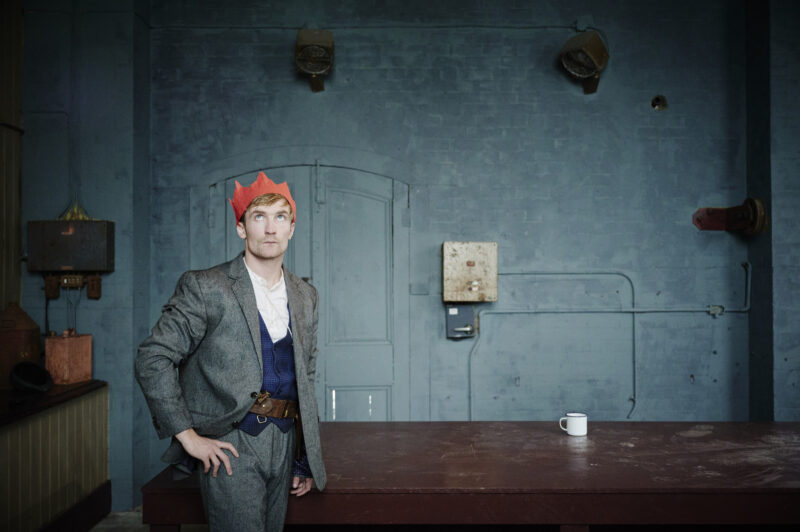
The Book of Names, produced by ANU Productions and Landmark, was an immersive performance set at the Pump House in Dublin Port. Audience members were brought to the performance space by a woman, portrayed by Etta Fusi, dressed in a high visibility suit, the modern Dublin Port uniform. In her swift shift from guide to actor, the audience was caught off guard, effectively setting the tone for the production.
The large group was then split up by a young boy on a bicycle dressed in a 1920s peaked cap, breeches and braces, marking the start of the shifting timelines throughout the play. The small, intimate groups of four allowed the audience to engage more with the performances. Within one of these small groups, the pace of the production was rapidly increased with the backdrop of a hall for dock workers, where labourers revealed themselves as hidden IRA members and produced guns and ammunition.
Throughout the production, the audience was perpetually confined to the role of active spectators, participating in every scene. For instance, they were asked to flick through the eponymous “Book of Names”, an intelligence dossier for the Royal Irish Constabulary (RIC) Soldiers. This conflation of audience and performers was normalised within the environment of the play, with one of the young female performers finding the second “Book of Names” with an audience member and leaving the choice to open it in their hands.
The Book of Names further provided the audience with an extensive view of life throughout the turbulence of the Troubles. For instance, the introduction of James Walsh, a Templemore teenager who claimed to have seen apparitions of the Virgin Mary, which resulted in a one month truce between the IRA and the RIC, provides crucial insight into the significant role of religion in the conflict.
In addition to the personal quality of the production, The Book of Names adds to the chaotic view of history through interludes of dance. Subsequent to the James Walsh scene, two men strode out onto the set forcefully demanding that “apparitions boy” should heal them. The lights then went black and began flickering before the men broke into a beautifully choreographed dance routine.
These dance interludes provide a break from the intense action of the play, pacing the suspense. Indeed, one of the tensely thrilling scenes featured the onstage actors drawing their guns, culminating in a moment of intense pressure which was promptly dispelled by the audience being asked to dance an Irish jig with the men, providing a lighthearted moment of release.
ANU and Landmark once again broke the boundary between the audience and the actor in a stimulating, engaging, and exciting way. Every aspect of The Book of Names was carefully curated to immerse audience members in the world of the play, from the performances down to the most minute set design details.






